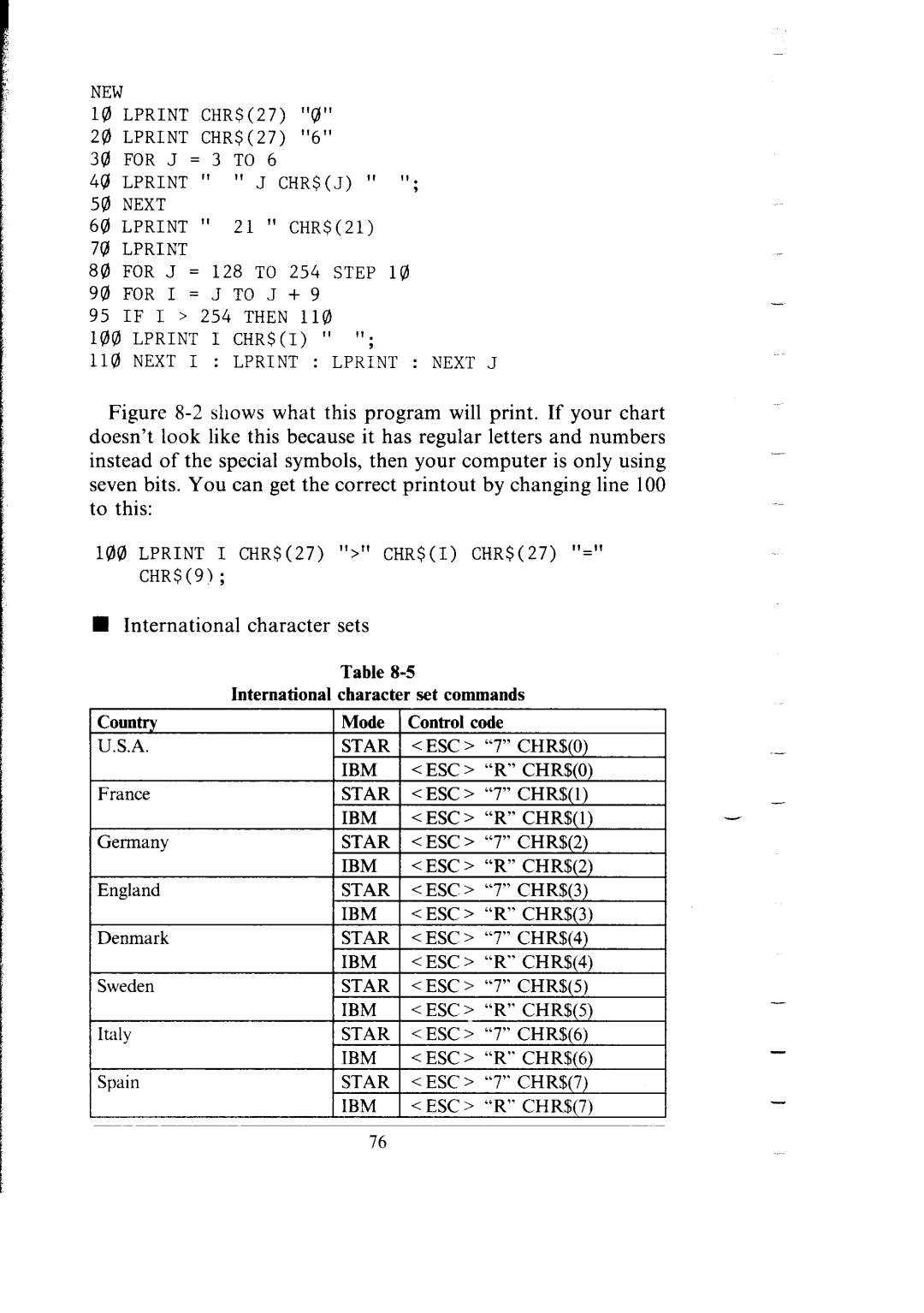
NEW
10 LPRINT CHR$(27) "0"
20 LPRINT CHR$(27) "6"
30 FOR J = 3 TO 6
40 LPRINT " " J CHR$(J) " 'I;
50NEXT
60 LPRINT " 21 " CHR$(21)
70 LPRINT
80 FOR J = 128 TO 254 STEP 10
98 FOR I = J TO J + 9
95 IF I > 254 THEN 110
188 LPRINT I CHR$(I) " ";
110 NEXT I : LPRINT : LPRINT : NEXT J
Figure 8-2 shows what this program will print. If your chart doesn’t look like this because it has regular letters and numbers instead of the special symbols, then your computer is only using seven bits. You can get the correct printout by changing line 100 to this:
I@$?LPRINT I CHR$(27) I'>"CHR$(I) CHR$(27) "="
CHR$(9);
nInternational character sets
| Table |
| |
International | character | set commands | |
Country | Mode | Control code | |
U.S.A. | STAR | < ESC > “7” CHR$(O) | |
| IBM | < ESC > “R” CHR$(O) | |
France | 1STAR / < ESC > “7” CHR$(l) | ||
| IBM | < ESC > “R” CHR$(l) | |
Germany | STAR | < ESC > “7” CHR$(2) | |
| IBM | < ESC > | “R” CHR$(2) |
England | STAR | < ESC > | “7” CHR$(3) |
.-
-
| IBM | < ESC > “R” CHR$(3) | |
Denmark | STAR | < ESC > | “7” CHR$(4) |
| IBM | < ESC > | “R” CHR$(4) |
Sweden | STAR | < ESC > | “7” CHR$(S) |
| IBM | < ESC > | - |
| “R” CHR$(S) | ||
Italy | STAR | < ESC > | “7” CHR$(6) |
| IBM | < ESC > | “R” CHR$(6) |
Spain | STAR | < ESC > | “7” CHR$(7) |
| 1IBM | 1 < ESC > | “R” CHR$(7) |
76
